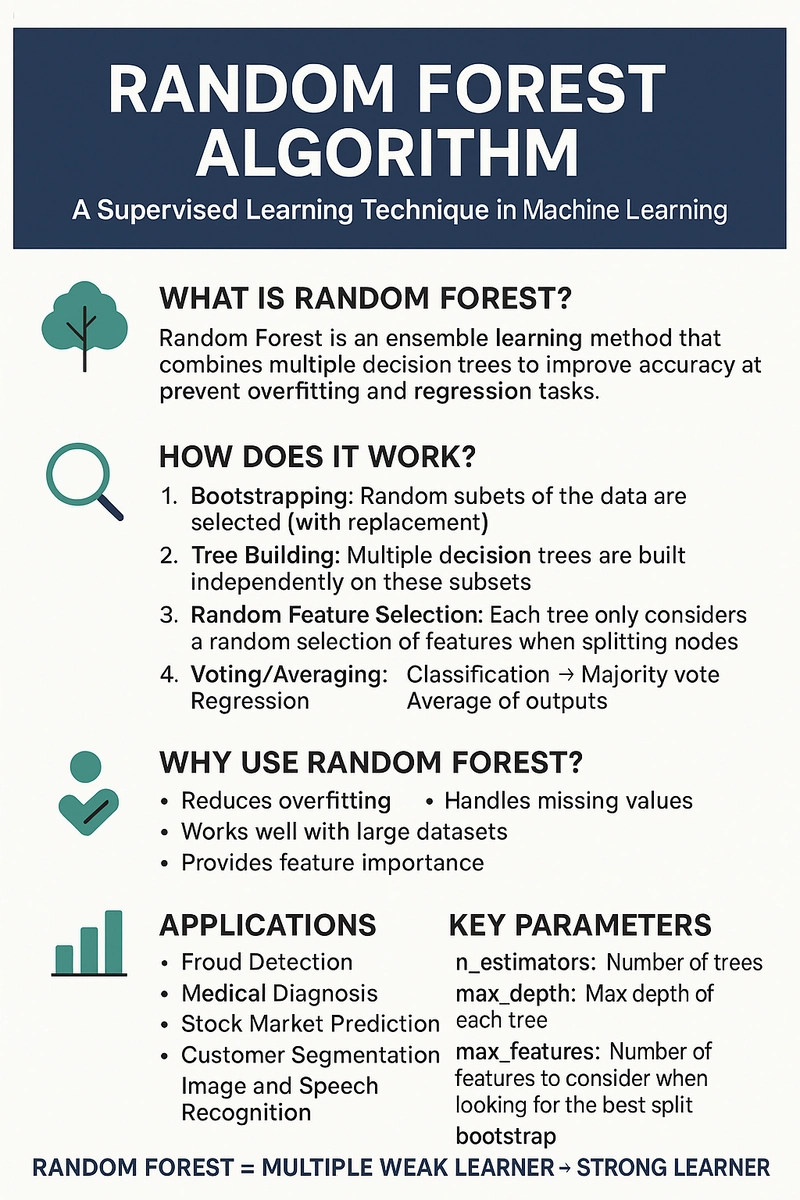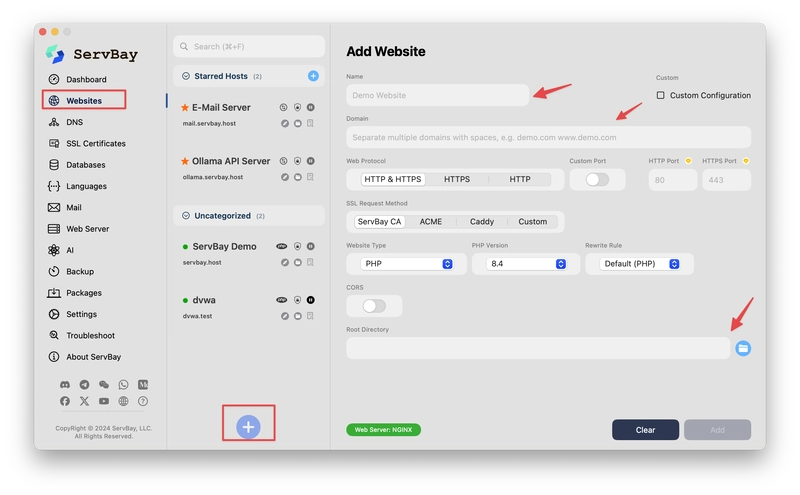Random Forest Algorithm: Powering Smarter Predictions with Supervised Learning
Definition Explains Random Forest as an ensemble method that combines decision trees to improve performance and reduce overfitting. Working Steps Outlines four key steps — Bootstrapping, Tree Building, Random Feature Selection, and Voting/Averaging. Advantages Lists benefits like reducing overfitting, handling missing data, working well with large datasets, and providing feature importance. Applications Mentions real-world uses like fraud detection, medical diagnosis, stock market prediction, and more. Key Parameters Specifies important settings like n_estimators, max_depth, max_features, and bootstrap.

Definition
Explains Random Forest as an ensemble method that combines decision trees to improve performance and reduce overfitting.
Working Steps
Outlines four key steps — Bootstrapping, Tree Building, Random Feature Selection, and Voting/Averaging.
Advantages
Lists benefits like reducing overfitting, handling missing data, working well with large datasets, and providing feature importance.
Applications
Mentions real-world uses like fraud detection, medical diagnosis, stock market prediction, and more.
Key Parameters
Specifies important settings like n_estimators, max_depth, max_features, and bootstrap.
































































































































































![[The AI Show Episode 143]: ChatGPT Revenue Surge, New AGI Timelines, Amazon’s AI Agent, Claude for Education, Model Context Protocol & LLMs Pass the Turing Test](https://www.marketingaiinstitute.com/hubfs/ep%20143%20cover.png)





























































































































![[DEALS] Koofr Cloud Storage: Lifetime Subscription (1TB) (80% off) & Other Deals Up To 98% Off – Offers End Soon!](https://www.javacodegeeks.com/wp-content/uploads/2012/12/jcg-logo.jpg)

























![Is this too much for a modular monolith system? [closed]](https://i.sstatic.net/pYL1nsfg.png)




















































































































_roibu_Alamy.jpg?width=1280&auto=webp&quality=80&disable=upscale#)




 CISO’s Core Focus.webp?#)








































































































![M4 MacBook Air Drops to Just $849 - Act Fast! [Lowest Price Ever]](https://www.iclarified.com/images/news/97140/97140/97140-640.jpg)
![Apple Smart Glasses Not Close to Being Ready as Meta Targets 2025 [Gurman]](https://www.iclarified.com/images/news/97139/97139/97139-640.jpg)
![iPadOS 19 May Introduce Menu Bar, iOS 19 to Support External Displays [Rumor]](https://www.iclarified.com/images/news/97137/97137/97137-640.jpg)





































































































